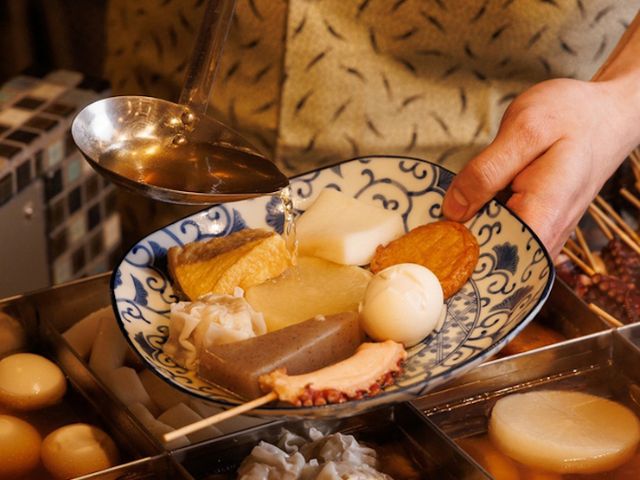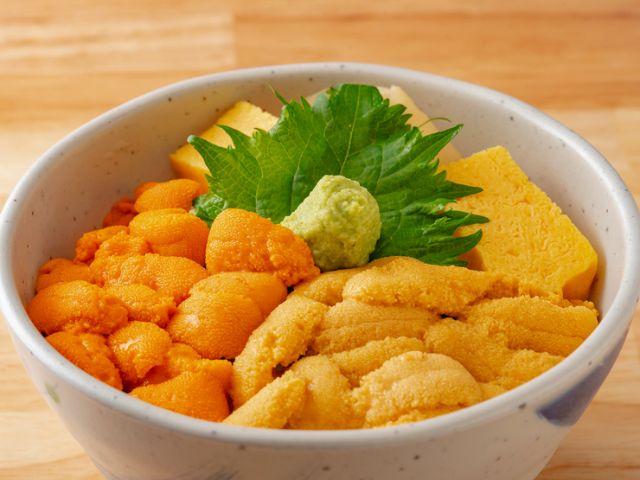Voyage for [Fukui Amaebi], the Future of Fishermen | Part 1
Update-Date: Apr 9, 2022
Author:
![Voyage for [Fukui Amaebi], the Future of Fishermen | Part 1](https://rimage.savorjapan.com/svj/image/discover_oishii_japan/1553/article_head.jpg?t=1649469383)
![Voyage for [Fukui Amaebi], the Future of Fishermen | Part 1](https://rimage.savorjapan.com/svj/image/discover_oishii_japan/1553/article_142753_w640z.jpg)
From Trade to Fishery ― The Development of Mikuniminato
![Voyage for [Fukui Amaebi], the Future of Fishermen | Part 1](https://rimage.savorjapan.com/svj/image/discover_oishii_japan/1553/article_142754_w640z.jpg)
![Voyage for [Fukui Amaebi], the Future of Fishermen | Part 1](https://rimage.savorjapan.com/svj/image/discover_oishii_japan/1553/article_142755_w640z.jpg)
Amaebi Fishing: A Staple of Fukui Prefecture
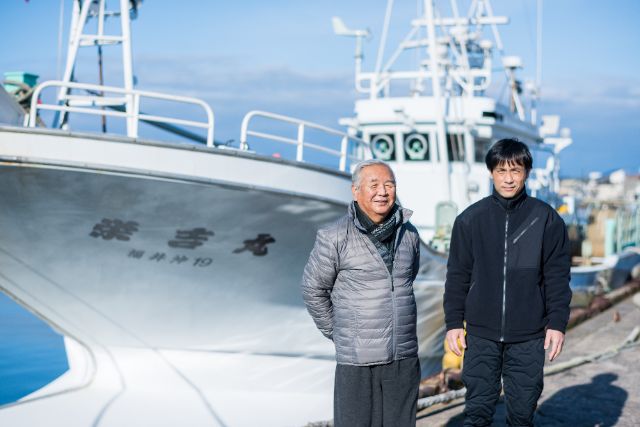
Surprisingly, amaebi has a very short fishing history. Masakatsu Hamade, who is the president of the representative governing body of Mikuni Port Dragnet Fishing Cooperative Association claims that the root of the fishing is here in Mikuni.
“The fishermen knew for a long time that amaebi can be caught as they were accidentally caught in crab fishing. However, given that the shrimps settled 500 meters under the sea, no technology was available at the time to catch them pinpointed. It is said that shrimp catching started in 1958, as crabs were poorly caught.” Hamade noted that this oral theory might be wrong, but it is speculated that amaebi catching became a business around 1955.
According to the Fisheries Division of Fukui, the news article “Poor Catch of Crabs” on December 18th, 1957, states that “Due to the poor catch of crabs in 1958, fishermen in Fukui started amaebi fishing.”
![Voyage for [Fukui Amaebi], the Future of Fishermen | Part 1](https://rimage.savorjapan.com/svj/image/discover_oishii_japan/1553/article_142757_w640z.jpg)
Its ecology is quite extraordinary. All amaebi is born male to five years, and from six years onward, it undergoes sex reversal. It fertilizes biennially, and it spawns the eggs around March or April after being pregnant for a year. Spending the next year without eggs, it is fertilized again. In this cycle, the shrimp spawns approximately three times in their eleven years of lifetime.
The characteristic of amaebi is its unique sweetness that spreads when eating its translucent body. Hamade told us that the delicious taste is heavily related to time.
[Fukui Brand] Preserving the Natural Resources for the Future
![[Fukui Brand] Preserving the Natural Resources for the Future](https://rimage.savorjapan.com/svj/image/discover_oishii_japan/1553/article_142758_w640z.jpg)
Sure, there are other prefectures such as Hokkaido and Ishikawa that boast the catch of amaebi, but the auction held in the evening (fish auction is normally held in the morning), and the strict criteria make the ones in Fukui especially well-conditioned.
![Voyage for [Fukui Amaebi], the Future of Fishermen | Part 1](https://rimage.savorjapan.com/svj/image/discover_oishii_japan/1553/article_142759_w640z.jpg)
“Amaebi shoals 500 meters underwater, so we use a dragnet called “Maedare Ami.” By floating the dragnet above the sea bed and pulling it precisely at amaebi’s habitat, other fish are not trapped. We carefully pull the net so as not to damage the soft body of the shrimp. After catching them, we deliver it after releasing the shrimps into a pool set at the temperature of two degrees which is a temperature akin to their habitat.” All of the processes are executed with care, and providing the most delicious shrimps starts with fishing.
![Voyage for [Fukui Amaebi], the Future of Fishermen | Part 1](https://rimage.savorjapan.com/svj/image/discover_oishii_japan/1553/article_142760_w640z.jpg)
Eiichirō Hamade explains, “To stop overfishing, we make it a rule of the cooperative association to trawl for amaebi only twice a sail. When the catch is poor, we allow trawling three times. My ship aims for about 1000 pounds per fishing.”
Waking up at 12:00 am, the fishermen depart the port at 1:00 am. Around 5:00 am, the ship arrives at the fishing ground and starts fishing. The second fishing starts at noon. Leaving the fishing ground around 4:00 pm and arriving around 7:00 pm, the fishermen swiftly start preparing for the evening auction. Sorting is performed on the ship. As there are more sorting criteria than in other prefectures, the process is difficult. On top of that, the shrimp is extremely delicate, so “it might get burned” if touched with a bare hand. Thus, sorting is performed with rubber gloves, without touching the shrimp unnecessarily.
![Voyage for [Fukui Amaebi], the Future of Fishermen | Part 1](https://rimage.savorjapan.com/svj/image/discover_oishii_japan/1553/article_142761_w640z.jpg)
The bodies of the freshly-caught shrimps glow. The expensive ones are the large female amaebi with roes. Compared to the past, the demand for amaebi has increased, as they are more often used in dishes such as sashimi, sushi, Italian, and French cuisine. Locals have a high expectation for “Fukui Amaebi” as well.
![Voyage for [Fukui Amaebi], the Future of Fishermen | Part 1](https://rimage.savorjapan.com/svj/image/discover_oishii_japan/1553/article_142762_w640z.jpg)
From trade to a fishery, residents in Mikuni lived strongly through the dynamic changes in the course of history. The future of fishing and the sea considered thoroughly by those who lived with them―such anticipation for the bright future is in this creamy and sweet “Fukui Amaebi.”
Disclaimer: All information is accurate at time of publication.
Thank you for reading our article.
Our goal is to take your culinary journey to the next level by helping you find the best restaurant. With SAVOR JAPAN, you can search and make reservations for
the restaurants found in and around Fukui that fill your needs.
Discover more restaurants by area
Keywords
Update-Date: Apr 9, 2022
Author:
Related Articles
New Articles
Categories
Cuisine
- Bars (23)
-
Japanese Cuisine (676)
- Kaiseki (46)
- Nabe (19)
- Okonomiyaki (24)
- Shabu Shabu (36)
- Soba (17)
- Sushi (137)
- Tempura (18)
- Teppanyaki (46)
- Shojin Ryori (3)
- Tonkatsu (12)
- Kushiyaki (10)
- Yakitori (46)
- Sukiyaki (35)
- Japanese Cuisine (341)
- Oyster (2)
- Sashimi/ Seafood (19)
- Unagi (eel) (30)
- Motsu Nabe (offal hotpot) (6)
- Mizutaki (chicken hot pot) (3)
- Oden (8)
- Kaisendon (seafood bowl) (9)
- Udon (2)
- Taverns(Izakaya) Cuisine (125)
- Western Cuisine (42)
- Italian/French Cuisine (95)
- Yakiniku/Steak (224)
- Chinese Cuisine (26)
- Ramen (Noodles) Cuisine (26)
- Cafe/Sweets (60)
- Other Asian Cuisine (5)
- Global/International Cuisine (7)
- Alcohol (45)
- Other (11)
Area
- Shikoku (10)
- Kyoto and Osaka (345)
-
Tokyo (460)
- Tokyo (286)
- Ginza (44)
- Roppongi (22)
- Shibuya (26)
- Shinjuku (47)
- Asakusa (20)
- Ebisu (12)
- Tsukiji (10)
- Tokyo Landmarks (4)
- Ueno (24)
- Akihabara (9)
- Ikebukuro (12)
- Jiyugaoka, Denenchofu, Nakameguro (9)
- Shimokitazawa (4)
- Kichijoji (3)
- Tachikawa (1)
- Omotesando, Harajuku, Aoyama (18)
- Akabane (1)
- Kagurazaka (4)
- Akasaka (10)
- Odaiba (1)
- Tsukishima, Harumi, Toyosu (3)
- Near Tokyo (100)
- Okinawa and Ryukyu Islands (58)
- Hokkaido (124)
- Northern Honshu (Tohoku) (31)
- Central Honshu (Chubu) (144)
- Western Honshu (Chugoku) (32)
- Kyushu (92)
Archives
- December 2025(9)
- November 2025(4)
- October 2025(3)
- September 2025(6)
- August 2025(11)
- July 2025(19)
- June 2025(18)
- May 2025(34)
- April 2025(43)
- March 2025(30)
- February 2025(36)
- January 2025(26)
- December 2024(69)
- November 2024(31)
- October 2024(15)
- September 2024(39)
- August 2024(65)
- July 2024(31)
- June 2024(54)
- May 2024(61)
- April 2024(28)
- March 2024(31)
- February 2024(42)
- January 2024(32)
- December 2023(20)
- November 2023(5)
- October 2023(11)
- September 2023(7)
- August 2023(18)
- July 2023(8)
- June 2023(8)
- May 2023(18)
- April 2023(15)
- March 2023(1)
- January 2023(1)
- April 2022(2)
- March 2022(2)
- February 2022(1)
- January 2022(1)
- July 2021(1)
- March 2021(1)
- February 2021(1)
- December 2020(1)
- October 2020(1)
- September 2020(2)
- August 2020(10)
- July 2020(6)
- June 2020(9)
- May 2020(11)
- April 2020(8)
- March 2020(8)
- February 2020(13)
- January 2020(9)
- December 2019(24)
- November 2019(8)
- August 2019(14)
- July 2019(15)
- June 2019(18)
- May 2019(17)
- April 2019(16)
- March 2019(22)
- February 2019(22)
- January 2019(26)
- December 2018(34)
- November 2018(40)
- October 2018(32)
- September 2018(11)
- August 2018(8)
- July 2018(6)
- June 2018(9)
- May 2018(10)
- April 2018(21)
- March 2018(74)
- February 2018(39)
- January 2018(26)
- December 2017(60)
Keywords
- Omakase
- Accessible
- Affordable
- All-You-Can-Eat
- Amazing Scenery
- anime
- Art
- Autumn
- Awards
- Beer Gardens
- Breakfast
- Chef Recommendations
- Cherry Blossoms
- Chinese
- Close To Station
- Condiments
- Counter
- Coupon
- Crab
- Culture
- Dassai
- Dates
- delivery
- Early Summer
- Editor's Recommendation
- English Available
- Event
- Expo
- Fall Leaves
- Family-Friendly
- Famous Restaurant
- Famous Tourist Spot
- Fast Food
- festival
- fireworks
- Flower Farm
- Free Wi-Fi
- French
- Great Location
- Guide
- Hibachi
- hotpot
- How To
- hydrangea
- Hygiene
- Illumination
- Italian
- Izakaya
- Japanese
- Japanese alcohol
- jingisukan
- Kaiseki
- Kappo
- Kushiage
- Kushikatsu
- Kyoto
- Late-Night
- Lunch
- Manners
- matsusakagyu
- Michelin
- mizutaki
- Model Course
- monjayaki
- motsunabe
- Mt.Fuji
- Multilingual Menus
- Nabe
- Narita Airport
- New Year
- Ninja
- Noodle
- Oden
- Okonomiyaki
- omotenashi
- Onsen
- Osaka
- Osaka Station
- Photogenic Site
- pizza
- PR
- Private Room
- Ramen
- ranking
- Recipe
- Regional Cuisine
- Resort
- Rice Bowl Dish (Donburi)
- sacred places
- Sake
- Sakura
- Sashimi
- sea urchin
- Setouchi Area
- Shabu Shabu
- sightseeing
- Signature Dish
- Soba
- Solo Diners Welcomed
- Spicy Food
- Spring
- Steak
- Summer
- Sunflower
- Sushi
- takeout
- Teppanyaki
- Terrace Seating
- Tokyo
- Tokyo Experiences
- Tokyo Skytree
- Tokyo Tower
- unagi
- UNESCO
- Vegan
- Vegetarian
- Wagyu
- What Popular Gourmet Sites Recommend
- Whisky
- Wine Bar
- Winter
- Wisteria
- Workshop
- World Heritage Site
- World Writers
- Yakiniku
- Yoshoku
- Yuba
- Zen
Discover Restaurants By Area
-

Tokyo Area
Japan's largest city, Tokyo, is the center of culinary culture in Japan. Countless Tokyo restaurants serve every kind of food imaginable and the Toyosu fish market keeps restaurants stocked with the nation's finest fish.
-

Near Tokyo
Coastal areas, mountains and valleys surrounding Tokyo are bursting with tourist destinations, such as hot springs and ski slopes, where many unique foods are only available locally.
-

Kyoto and Osaka Area
The cities of Kyoto and Osaka, together with their surrounding areas, have greatly influenced Japan's culinary culture since the 7th Century. The region is renowned for its entertainment, Kobe beef, and wide-ranging traditional dishes.
-

Hokkaido Area
The island of Hokkaido is home to wide-ranging produce of the finest quality, such as rice, meat, vegetables, fish and fruit. Popular dishes from Hokkaido include robatayaki (food slowly roasted on skewers) and Sapporo miso ramen.
-

Northern Honshu (Tohoku)
The northern end of Japan's main island, Honshu, is renowned for its seasonal fruit and vegetables, nation-leading harvest of fish (especially tuna from Ohma), and delicious beef from Yonezawa, Sendai and Yamagata.
-

Central Honshu (Chubu)
Chubu is in the center of Japan's main island, Honshu, and its culinary culture reflects its position between Japan's western and eastern halves. Delicious Hida beef, world-famous Mount Fuji and many acclaimed sake breweries are in Chubu.
-

Western Honshu (Chugoku)
Chugoku, on the southwest of Japan's main island, is rich with diverse produce. Many of its products are praised as Japan's best, including Matsuba crabs from Tottori and oysters from Hiroshima. Its pears and muscats are also top grade.
-

Shikoku
The mild climate of Shikoku is ideal for growing citrus fruit such as sudachi. Shikoku is also famous for Sanuki udon noodles, huge yields of tiger prawn from Ehime Prefecture and the best torafugu (tiger globefish) in the country.
-

Kyushu
Western culture was first introduced to Japan through Kyushu, Japan's third largest island, where the influence of Portuguese and other western cuisine influenced the creation of a colorful culinary tradition.
-

Okinawa and Ryukyu Islands
Okinawa, Japan’s southernmost prefecture, is a treasure trove of distinctive dishes and drinks that have become popular throughout Japan, including Okinawa soba, unique sushi toppings and Awamori distilled liquor.
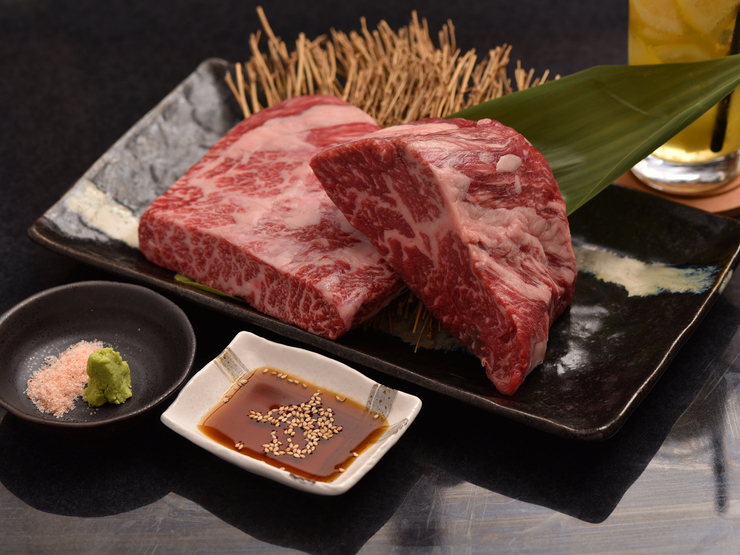
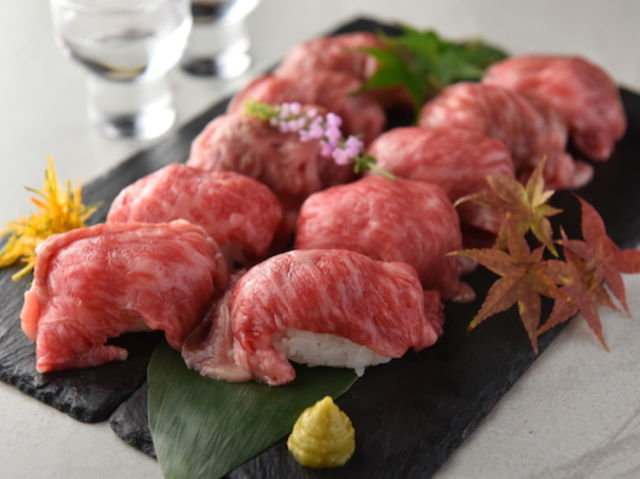
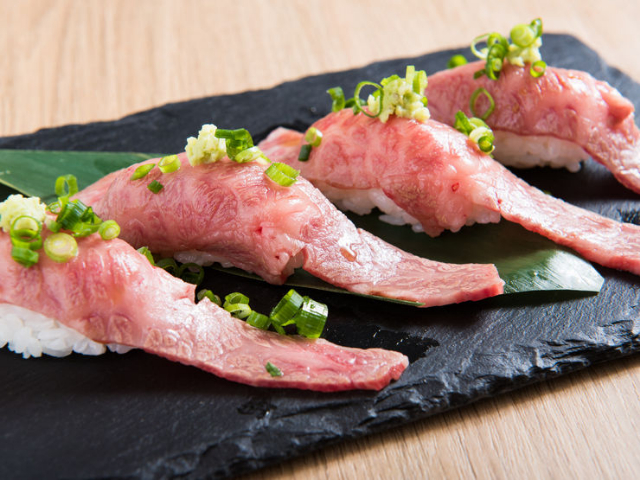
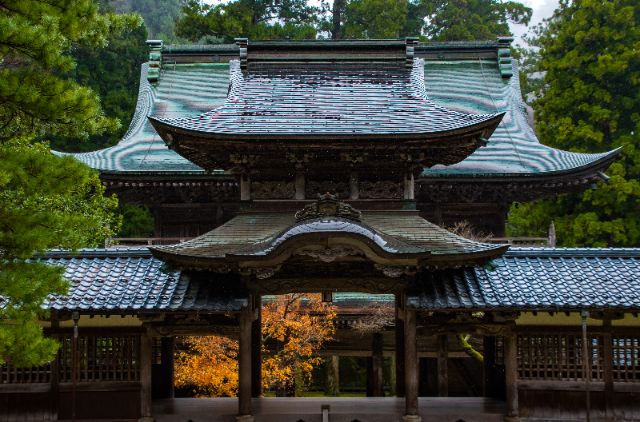
![Voyage for [Fukui Amaebi], the Future of Fishermen | Part 2](https://rimage.savorjapan.com/svj/image/discover_oishii_japan/1554/article_head.jpg?t=1648845001)
![[Kumagaya, Saitama] Enjoy Ingredients of the No.1 “Hotspot” in Japan](https://rimage.savorjapan.com/svj/image/discover_oishii_japan/1548/article_head.jpg?t=1717411010)
